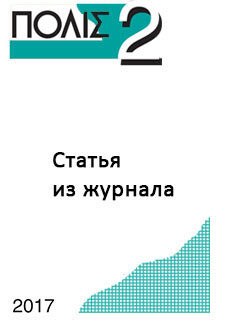Online shop of "Polis. Political Studies" Journal
We in the world, the world in us
Rozov N.S. The Vector of Russian 1917 Revolution: Modernization or Counter-Modernization? – Polis. Political Studies. 2017. No 2. P. 8-25 (In Russ.) .
150 руб.
Russian revolution in the broadest sense (from its prehistory in 1905-1907 to the Stalinist regime formation in the late 1920s) is considered in the context of several autonomous modernization processes (according to Randall Collins): secularization, growth of creative freedom in culture, bureaucratization, capitalist industrialization, and democratization. General links are formulated between these processes and revolutions in such aspects as the level of violence, the revolutionary success (change of power, significant concessions) or failure (when reaction wins), as well as the type of development trends of post-revolutionary regimes. True modernization usually leads to growth of economic, political and creative freedom, it strengthens a state in the aspects of resources, political and military power, prosperity and management. Russian revolutionary way was ambiguous. The Revolution led to one-sided modernization that later turned out to be counter-modernization. Initial progress after the February 1917 to democracy and collegial division of power led finally to Stalinism as one of the most brutal forms of totalitarianism. The “under-capitalist” industrialization and the Tzarist bureaucracy of the old regime were destroyed by the Revolution but then they both revived in forms of the “socialist” Stalinist industrialization and Soviet “nomenclature”. These processes have strengthened the totalitarian and aggressive state of USSR with its later triumph of the victory in 1945 and formation of a superpower with several socialist satellites. However, in the aspects of secularity, creative freedom and democracy the counter-modernization occurred which caused fragility of this state success, turbulence of further development, recent slip to deindustrialization in national economy, neopatrimonialism as a decay of state bureaucracy, growth of censorship and desecularization in culture.
 English
English Русский
Русский

Reviews
There are no reviews yet.